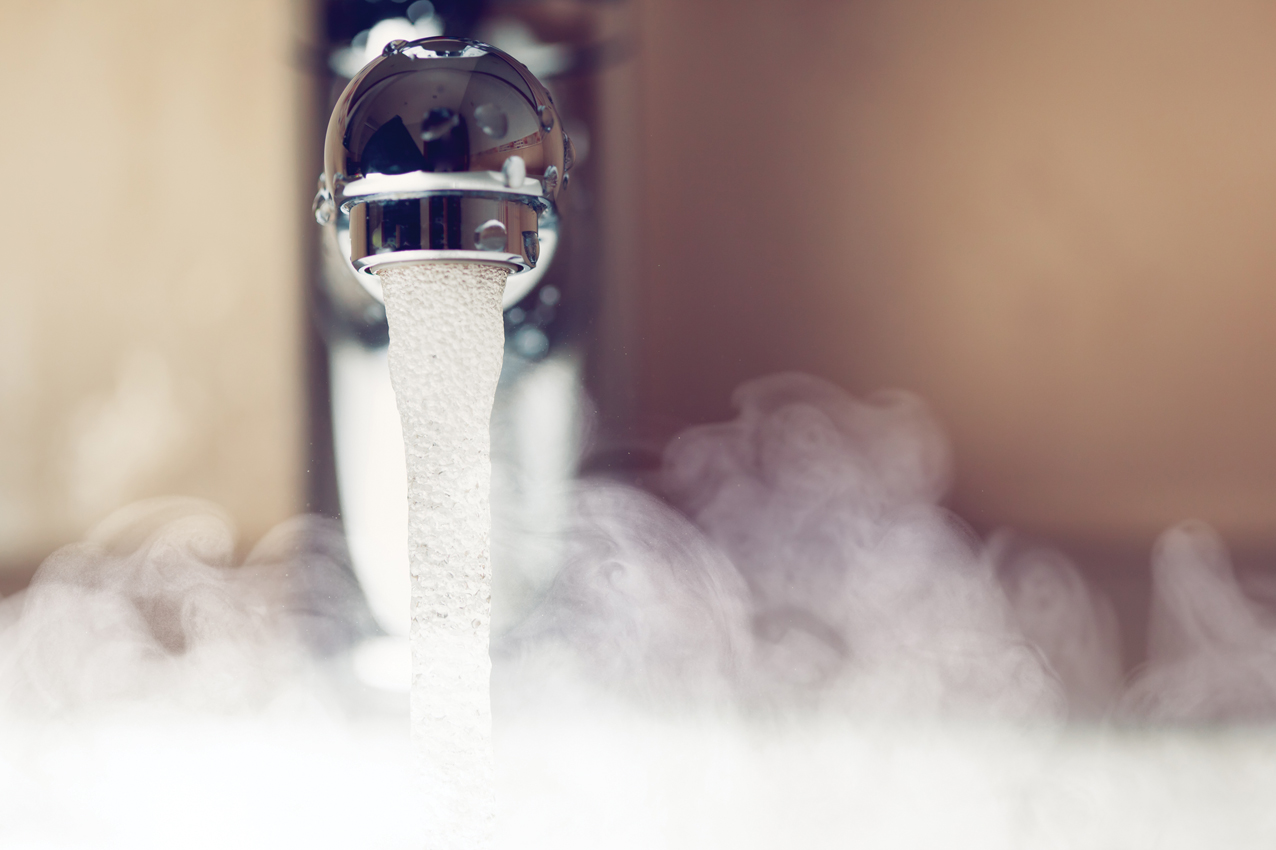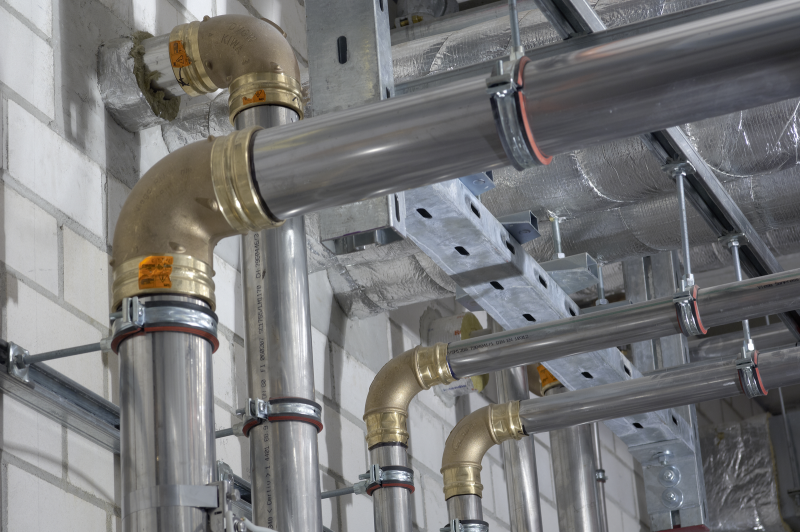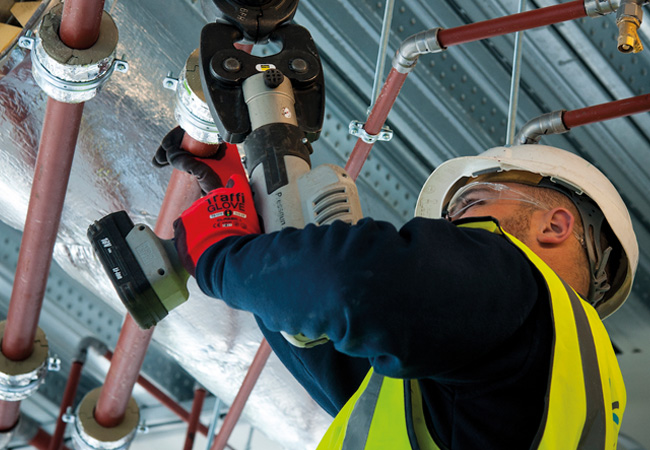
Credit: iStock.com/Bet_Noire
Advances in technology, combined with the drive to conserve water through low-flush toilets and low-flow devices, mean current and reliable data on building water consumption must be obtained to ensure demand is assessed more accurately.
Without considering the implications of current practices – which reduce or limit building water consumption – demand and water-tank turnover rates can lead to stagnation of water in domestic installations, resulting in public health issues, including bacteria growth.
While bacteria may be in a viable but nonculturable (VBNC) state at low temperatures, they are capable of amplification in warmer water temperatures.
The sizing of all aspects of domestic water systems should, therefore, include an accurate estimation of the anticipated water consumption by the end users.
For legionella to proliferate, certain conditions are required, including:1
- Water temperature in the system of between 20°C and 45°C
- Potential for water aerosols to be formed and become airborne
- Water being stored and/or recirculated
- Presence of deposits in the system, such as sludge, organic matter, rust, scale and nutrient
- Amoebae, which are known to cause retrograde contamination of legionella bacteria.
For legionella bacteria to amplify, ambient temperature and relative humidity (RH) need to be exact. Bacteria can proliferate in storage tanks, calorifiers, pipework and plant, filters, thermostatic mixer valves (TMVs) and particular types of fittings and materials.
All bacterium need a substrate – or food source. The common causes of contamination from hot- or cold-water systems are showers, taps, spray heads and spa baths. Other risk systems include humidifiers and air washers, car-wash lances, and horticultural misting systems.2
Water that is contaminated can pose a risk of infection if it can become an aerosol and airborne. Small particles can remain suspended in air for long periods and travel over considerable distances.2 They are dry and contain no free moisture. Only bound water is present, which represents a small percentage of the total mass. When contaminated air is inhaled into the lungs, particles that are 5µm in diameter or less will be retained in the lungs because these sizes are difficult to expel. The risk increases with duration of exposure, respiratory rate and number of legionellae in the air.2
A particle can remain suspended in air for prolonged periods of time and travel over considerable distances
A biofilm is any group of micro-organisms in which cells stick to each other and, often, to a surface. These adherent cells become embedded within a slimy, extracellular matrix that is composed of extracellular polymeric substances (EPS). This means legionella may be protected from normal water treatment methods.2
It is still possible, however, for biofilm to form that will support bacterial growth if water is circulated within a system. Water flowing or pumped into a water distribution system only causes shearing of biofilm – it does not remove it once it is established.
Pipework surfaces are not smooth, and biofilms will stick to them, so regular draw-off and water movement through the system – supported by automated flushing systems or via manual intervention by janitorial or facilities management (FM) staff – are important to minimise the risk.
Legionellae are only able to grow in water in the presence of other micro-organisms. They have also been shown to be associated with biofilm on surfaces in water systems, where they can grow in the protozoa grazing the biofilm.2 In addition, evidence suggests they can grow outside protozoa, alongside – and supported by – other organisms within the biofilm.

Credit: iStock.com/Nikkytok
Growth within protozoa – particularly with the potential for incorporation within protozoal cysts – can protect legionellae from biocides, heat and drying. This enables them to survive under conditions that would otherwise be fatal, and to be transported within protozoa and cysts to more favourable environments, where they might grow.
The association with biofilms, as with other aquatic bacteria, offers legionellae a nutritional advantage and some protection against adverse environmental conditions – particularly biocides, which would kill them if they were simply suspended within the water column. Control of biofilm formation within water systems is of paramount importance for the control of legionellae.
Water-flow temperatures also have an influence on the water volume being used, particularly in relation to hot-water services. Hot-water temperatures need to be sufficiently low to mitigate scalding risk, but – as a result – can potentially encourage bacterial growth and the presence of legionella bacteria, stenotrophomonas and pseudomonads, including other waterborne, opportunistic pathogens.
The optimum legionella bacteria multiplication temperature is between 32°C and 42°C.2 HSE L81 requires the temperature of domestic hot-water systems to be maintained above 50-60°C. It also advises that stored hot water is not below 60°C, with a recommended distribution temperature of no less than 50°C, and 55°C in healthcare premises, within one minute of running an outlet.3
Temperatures in excess of approximately 44°C3 may result in burns to the skin, so a conflict exists between storing hot water at 60°C and the risk of scalding. As a result, hot-water temperatures need to be controlled via thermostatic control devices – such as TMVs – or suitable warning signs need to be placed next to hot-water outlets. Better still, put a thermostatic mixing tap (TMT) on the wash hand basin, minimising pipe lengths from lowered, blended temperatures from a TMV to the outlets.

Good technical engineering design is one of the ways to reduce legionella bacteria Credit: iStock.com/CHIARI_VFX
Identifying risk of infection
Empirical data suggests the ideal temperature for microbial growth and proliferation is 37°C. Below this, the rate of multiplication declines and can be considered marginal below 20°C.2
Certain groups of people are more susceptible, including: over 45-year-olds; smokers; alcoholics; diabetics; immune compromised; and those with cancer, respiratory or kidney disease.
HSG 274 states that all pipe branches to individual outlets should be capable of delivering cold water at a temperature close to the incoming water temperature within two minutes of running.
Management of legionella risks are described in the approved code of practice guidance document L8, Legionnaires’ disease: The control of legionella bacteria in water systems1, and HSG274 Part 2: The control of legionella bacteria in hot and cold water systems.3 The key actions are:
- Appointment of a ‘responsible person’ to be managerially responsible
- Identification and assessment of sources of risk, including the preparation of a risk-minimisation scheme for preventing and controlling the risk
- Implementation and management of the risk-minimisation scheme
- Record keeping and checking the actions taken are effective in preventing or controlling the risk.
Risk assessments are about compliance and vulnerability. They involve assessing compliance status using checklists, the response to which are either ‘yes’ – indicating compliance – or ‘no’, meaning non-compliance. The more non-compliant the conditions, the greater the likelihood that something could transpire.
When the risk has been assessed, it is necessary to minimise and control it – and the assessment must be reviewed regularly, as stated in HSE L8.
The ideal temperature for microbial growth and proliferation is 37°C. Below this, the rate of multiplication declines
The record of the assessment is a living document that must be kept up to date. Arrangements should be made to review the assessment regularly – and, specifically, whenever there is reason to suspect it is no longer valid. An indication of when to review the assessment and what should be recorded2,3 may result from:
- Changes to the water system or its use
- Changes to the use of the building in which the water system is installed
- The availability of new information about risks or control measures
- The results of checks, indicating that control measures are no longer effective
- Changes to key personnel
- A case of Legionnaires’ disease/legionellosis associated with the system.
When the assessment indicates there is a reasonably foreseeable risk from a water system, exposure has to be avoided so far as is reasonably practicable.
Where this is not practicable, a written scheme for controlling the risk from exposure should be implemented and properly managed. The scheme should specify measures to be taken to ensure it remains effective.
Summary
It is becoming increasingly difficult to size cold- and hot-water systems because more low-flow devices and mixing valves are being incorporated.
Even though outbreaks of Legionnaires’ disease are infrequent they are potentially life threatening, and may be avoidable through engineering design and operational-side maintenance and management.
Successful control of legionella bacteria is a combination of good technical engineering design and client-side control management. One of the key considerations should be to review the sizing guides/methodologies to account for modern practices. This will require more research, data analysis and sharing of raw, live, consumption data from actual buildings.
■ The issues and mitigation measures highlighted in this article have been compiled through the experience of multiple engineers from many consultancies over several years, and in no way reflect projects at Aecom or Arup.
■ Richard Beattie is a senior engineer at Aecom Edinburgh, Damien Kane is a senior engineer at Arup Glasgow, and Paul Nolan is an authorising engineer at Paul Nolan Water Hygiene
References:
- UK Health and Safety Executive, Approved Code of Practice and Guidance, The control of legionella bacteria in water systems, L8, fourth edition (Health and Safety Executive Books, 2013).
- CIBSE, TM13, 2013, Minimising the risk of Legionnaires’ disease, The Chartered Institution of Building Services Engineers, London. See www.cibse.org/knowledge
- UK Health and Safety Executive, HSG 274 Part 2: The control of Legionella bacteria in hot- and cold-water systems (Health and Safety Executive Books, 2014).







